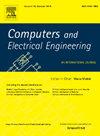将VCNN模型与RVFLwoDL相结合,提高车位分类能力
IF 4.9
3区 计算机科学
Q1 COMPUTER SCIENCE, HARDWARE & ARCHITECTURE
引用次数: 0
摘要
车位分类对缓解交通拥堵、减少空气污染、提高驾驶员出行便利性具有重要意义。本研究将卷积神经网络(VCNN)与增量随机向量函数无直接链接(I-RVFLwoDL)巧妙结合,提出了一种鲁棒停车位分类模型。主要的创新是用I-RVFLwoDL取代了VCNN的全连接层。这消除了对昂贵的反向传播过程的需要,从而大大减少了训练时间。VCNN与I-RVFLwoDL的集成利用了I-RVFLwoDL的快速学习效率和鲁棒泛化能力。I-RVFLwoDL通过消除在其他已建立的方法中通常发现的复杂神经元通路来简化网络结构。利用三个已建立的数据集:PKLot、CNRPark和CNRPark+EXT严格评估了所提出的混合模型的有效性。该系统通过机器学习中使用的各种性能指标来区分已占用和空置停车位的能力。该模型的性能还与现有的深度学习模型进行了比较,以说明其优越性。该研究为智能交通系统提供了有效的停车位分类解决方案,具有重要的应用潜力。本文章由计算机程序翻译,如有差异,请以英文原文为准。
Integration of VCNN models with RVFLwoDL to boost the parking space classification
Parking space classification is critical in elevating traffic congestion, reducing air pol- lution, and enhancing drivers’ convenience. This study introduces a robust model for parking space classification, ingeniously combining variants of the Convolutional Neu- ral Network (VCNN) with the Incremental Random Vector Function Link without di- rect link (I-RVFLwoDL). The primary innovation consists of substituting the fully connected layer of the VCNN with I-RVFLwoDL. This eliminates the need for a costly backpropagation procedure, resulting in a substantial decrease in training time. The integration of VCNN with I-RVFLwoDL utilizes the I-RVFLwoDL’s rapid learning efficency and robust generalization capabilities. I-RVFLwoDL simplifies the network structure by eliminating the complex neuron pathways typically found in other established methodologies. The proposed hybrid model’s effectiveness is rigorously as- sessed utilizing three established datasets: PKLot, CNRPark, and CNRPark+EXT. The system’s ability to distinguish between occupied and vacant parking spaces is demon- strated through various performance metrics used in machine learning. The proposed model’s performance is also evaluated against existing deep learning models to illustrate its superiority. This research presents significant potential for intelligent transportation systems, providing an efficient solution for parking space classification.
求助全文
通过发布文献求助,成功后即可免费获取论文全文。
去求助
来源期刊

Computers & Electrical Engineering
工程技术-工程:电子与电气
CiteScore
9.20
自引率
7.00%
发文量
661
审稿时长
47 days
期刊介绍:
The impact of computers has nowhere been more revolutionary than in electrical engineering. The design, analysis, and operation of electrical and electronic systems are now dominated by computers, a transformation that has been motivated by the natural ease of interface between computers and electrical systems, and the promise of spectacular improvements in speed and efficiency.
Published since 1973, Computers & Electrical Engineering provides rapid publication of topical research into the integration of computer technology and computational techniques with electrical and electronic systems. The journal publishes papers featuring novel implementations of computers and computational techniques in areas like signal and image processing, high-performance computing, parallel processing, and communications. Special attention will be paid to papers describing innovative architectures, algorithms, and software tools.
 求助内容:
求助内容: 应助结果提醒方式:
应助结果提醒方式:


